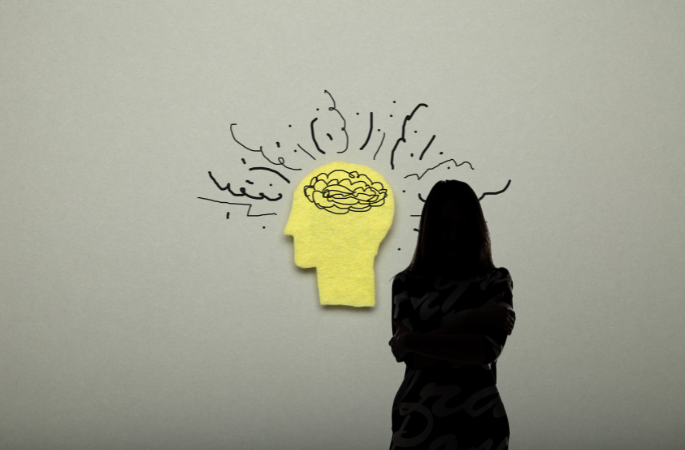In 2020, my life changed. I was diagnosed with ADHD around the time I was celebrating the diamond jubilee of my arrival on Planet Earth. Since early childhood I remember struggling with anger outbursts, being chronically late, feeling anxious in social situations and getting lost in my own head. Every day, I would religiously write a To Do list with a minimum of 20 tasks. Despite my best efforts, I could never complete more than 25% of them. At the same time, I found myself doing more things that were never on the list (but which I enjoyed, like gardening and labelling food containers!). The surface of my desk was hidden from view by ever-increasing piles of papers to be filed, notes to be written, journals to be read, letters to be replied to and projects to be completed. Seeing my goals recede further into the distance, left me feeling helpless and frustrated. What was wrong with me? Yet the thought of ADHD never crossed my mind. I just tried harder.
As a developmental paediatrician, I have worked with children in the field of mental health for three of the six decades of my life and encounter ADHD in its various shapes and sizes on a daily basis. How is it that I missed my own diagnosis for so many years? Was it a measure of the extent of my professional ignorance? Well, yes and no! There is a paucity of information about ADHD in girls and women. Most of the research literature focuses on studies done on male populations. So perhaps I could forgive myself for not knowing enough about ADHD in females. However, the more compelling reason for my late diagnosis as a sexagenarian, (which, by the way, is not unusual), lies in the nature of ADHD in women – it is a land of ‘misses’ – Misunderstanding, missed diagnosis, misdiagnosis and mistreatment.
There are several reasons why women with ADHD traverse a different developmental trajectory, leading to their symptoms flying under the radar and hence resulting in a greater impact on diverse areas of their lives.
The most popular portrayal of ADHD is young boys who run around like ‘non-stop engines’, bounce off walls and get into trouble frequently. For girls, the picture can be very different, as their presentation is most often one of inattention. These are the ‘daydreamers’, the quiet and shy ones who live with ‘their head in the clouds. Girls have an internalised form of ADHD which means that the symptoms go below the surface, presenting with emotional reactivity, overthinking and lack of confidence. Their school books are often peppered with teacher’s remarks that typically say ‘Capable and intelligent, could do much better if only she _____. One can fill in that blank space with any of the following phrases – tried harder, practised more, paid attention, was more careful, took responsibility, revised her work, checked her work. As these girls grow into teenagers, the gap between their potential and performance grows wider. They suffer in silence and thanks to the overly critical voices in their own heads, their self-doubt grows, leading to a further eroding of their self-esteem.
The second reason why women are impacted more seriously by ADHD than men is the influence of hormones. Estrogen acts on the brain and potentiates the influence of dopamine, the key neurotransmitter in the brain that is lacking in ADHD. Hence symptoms worsen during times when estrogen is low such as the second half of the menstrual cycle, the post-partum period and at menopause. In my own life, my forgetfulness reached such a peak during menopause, that I thought I was getting dementia. Stress levels tend to shoot through the roof at these times, as task completion and time management become overwhelming. This leads to anxiety, insomnia and depression, throwing many women into a downward spiral of mental suffering. In fact, women with ADHD are more likely to be diagnosed with depression, rather than ADHD, which is the primary cause of their challenges.
For women with ADHD, gender roles increase the burden of adversity. Society places many demands on how women should behave and what they must accomplish. They are expected to be good students, obedient daughters, caring mothers, responsible homemakers, proficient and punctual employees, dutiful wives, thoughtful friends and so on. These gender role expectations require an extraordinary degree of executive functioning – planning, prioritizing, flexible thinking, problem-solving, good time management and organization. In the face of ADHD, juggling these diverse tasks and balancing everything is overwhelming. Many women are physically and mentally exhausted by the end of the day. They typically believe that they are not trying hard enough, adding further fuel to the fire of stress. Every effort to generate more effort builds momentum for a speedy descent to burnout.
Asking for help is seen as an open admission of personal failure. Women have greater motivation to mask their difficulties and compensate for their struggles either by working even harder or avoiding the task entirely. They invest more time and energy in over-organization to present an outward picture of perfection. The furious paddling to keep afloat remains hidden and comes at a great cost to the woman’s emotional and mental wellbeing. The deep-rooted feeling of not being good enough accompanied by constant comparison to others and a devaluing of one’s own efforts lead to what is described in the literature as ‘imposter syndrome, a situation where one feels like a fraud, unworthy of success.
Yet, despite all the obstacles described, the picture need not be one of doom and gloom. ADHD comes with a host of immense strengths too and there is no field of work in which people with ADHD have not excelled. My passion for child development (and some fearless impulsivity!) is what propelled me to bring a group of six women together to start an organization with a stellar multidisciplinary team of professionals working in childhood disability, despite living with undiagnosed and untreated ADHD for so many years.
The ADHD brain is an interest-based one. If it is absorbed in something, nothing can stop it. Therefore, it is imperative that women who have great talents and dreams but struggle with reaching their goals should learn more about ADHD through the experiences shared by women ADHD advocates. If their stories sound familiar, then it is worth getting assessed for the condition by a professional who knows about ADHD in women. An accurate diagnosis can be life-changing. It can be the start of a journey out of shame and stigma towards a wholesome understanding and acceptance of oneself. After my own ADHD diagnosis, I finally had answers for why despite being fairly ‘smart’ I still struggled with important but boring tasks like writing a project report, managing a home or paying attention to my health. I stopped envying my friends who could throw elaborate parties, cook delicious meals and dress impeccably. I have learnt to embrace my differences instead of hiding them. Often, they provide me with rich fodder for comedic expression!
Finding my tribe of people with ADHD has been easy – they are everywhere! In my family, at my workplace, among my friends and on the internet, I encounter an increasing number of brave individuals who proudly proclaim their neurodiversity. In doing so we create safe spaces where we can shed our masks, drop our defences, shake away shame and connect through the strength of our human vulnerability.
Untreated ADHD can feel like riding an out-of-control wild horse that is headed towards a dangerous precipice. However, an accurate diagnosis and effective treatment can make us competent riders, in full charge of our powerful mounts, as we resolutely gallop across a landscape of limitless possibilities, in a direction of our choice.





